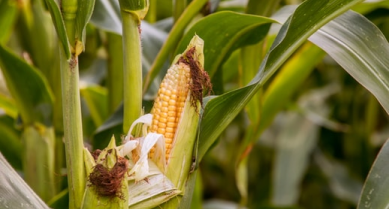Valuing natural capital through consensus building
Prof Tiffin explains that the so-called natural capital framework is becoming widely accepted as a conceptual model to help manage the natural environment.
Following the announcement of the government’s 25 year Environment Plan, Professor Richard Tiffin, Chief Scientific Officer for Agrimetrics, was asked to present a case-study about valuing natural capital to a Westminister Forum discussing policy priorities for further protecting the environment and conserving natural capital.
Prof Tiffin explains that the so-called natural capital framework is becoming widely accepted as a conceptual model to help manage the natural environment.
It borrows economic concepts, so natural capital is seen to be akin to a physical capital asset.
An example of a physical asset is a farm building. The asset provides services in the shape of accommodation for livestock. It depreciates as it does so and it can be invested in to restore the effects of depreciation.
Likewise a natural capital asset, for example a forest, provides services and it can be depreciated and invested in. Some services can be valued, for example the provision of timber, and others, such as carbon sequestration cannot.
As an economist, I have some unease about extending the reach of our discipline into providing a monetary value for those services for which no market exists.
Whilst the methodologies are sophisticated, the extent to which they provide a valid equivalent to the price which would result if a market existed is still unclear.
Even if a valid market price can be obtained, its use as a valuation of the stock of an asset is questionable. The price is effectively a marginal valuation of a change in the stock and not all units of the stock will be valued at this price.
The price I would pay to save the last great crested newt on the planet is probably quite a bit higher than the value I place on saving a great crested newt now.
One solution is to consider our need for a valuation from a different perspective and take the view that a market is just a means of achieving a consensus between everyone who has a stake in that particular thing.
Valuing natural capital assets through consensus
case-study/putting-value-ecosystem-services
There are other ways to achieve a consensus and Agrimetrics has been working with Natural England to explore this.
Together we have developed a tool called Natural Capital Explorer that can be used to achieve a consensus between different organisations on the value of natural assets. Making good decisions over land use, together with careful management, can add value to these assets.
Management of water extraction is an example that we have been working on with Natural England, by taking the use case of a brewery (a big consumer of water) applying for planning permission. The parish council would need to take into consideration the impact of extraction on other water users, including local farmers, and also the implications for water quality in the rivers.
The idea was to develop a way that big data – all the information relating to a particular place – could be captured and presented so that it is meaningful to non-specialists, for example members of a parish council faced with this type of complex planning application.
The natural assets, in this case the river and associated water meadows, provide a number of ecosystem services, including fresh water.
Connecting assets to services visually
To explain the link between assets and services Defra has created a number of logic chains.
Logic chains are processes that show how biodiversity contributes to economic activity and human wellbeing. For example, riverine vegetation provides flood and drought mitigation, pollination can be linked to food provision and there is a link between woodland and clean air. These logic chains are difficult to communicate to non-specialists so Agrimetrics has been using data visualisation to present this information in the form of a dashboard.
In this way Natural Capital Explorer allows non-specialists to compare different parishes to see the impact of alternative land use strategies. This puts the facts into the hands of the stakeholders so they can see the bigger picture and achieve a consensus over value.
Implementing 25 environment plan
Defra’s 25 year environmental plan is a vision for improving the natural capital assets to ensure sustainability and wellbeing. To implement the plan all the stakeholders need access to objective information.
In reality, Defra and the various stakeholders already hold a significant amount of data; the issue is really around how to make it accessible so that it can be analysed in a meaningful way.
We can do this and we see Agrimetrics’ mission as being to flip the data consumption model so it is not directed by the providers of data but instead becomes driven by the users and consumers of data.
Green Future – Defra’s 25 Year Environment plan

Water framework directive
Other articles that might interest you

AI identifies crops from space with 90% accuracy
Agrimetrics launches CropLens AI, a proprietary algorithm that identifies crop types from space.

ClearSky: Cloud free satellite data for agriculture
ClearSky's artificial intelligence removes a major barrier to the efficacy of satellite

ClearSky: Cloud free satellite data for agriculture
ClearSky's artificial intelligence removes a major barrier to the efficacy of satellite

Agrimetrics partners with Airbus to reduce cost
Crop Analytics, a crop and field analytics package from Airbus, is now available at a new, lower price.



